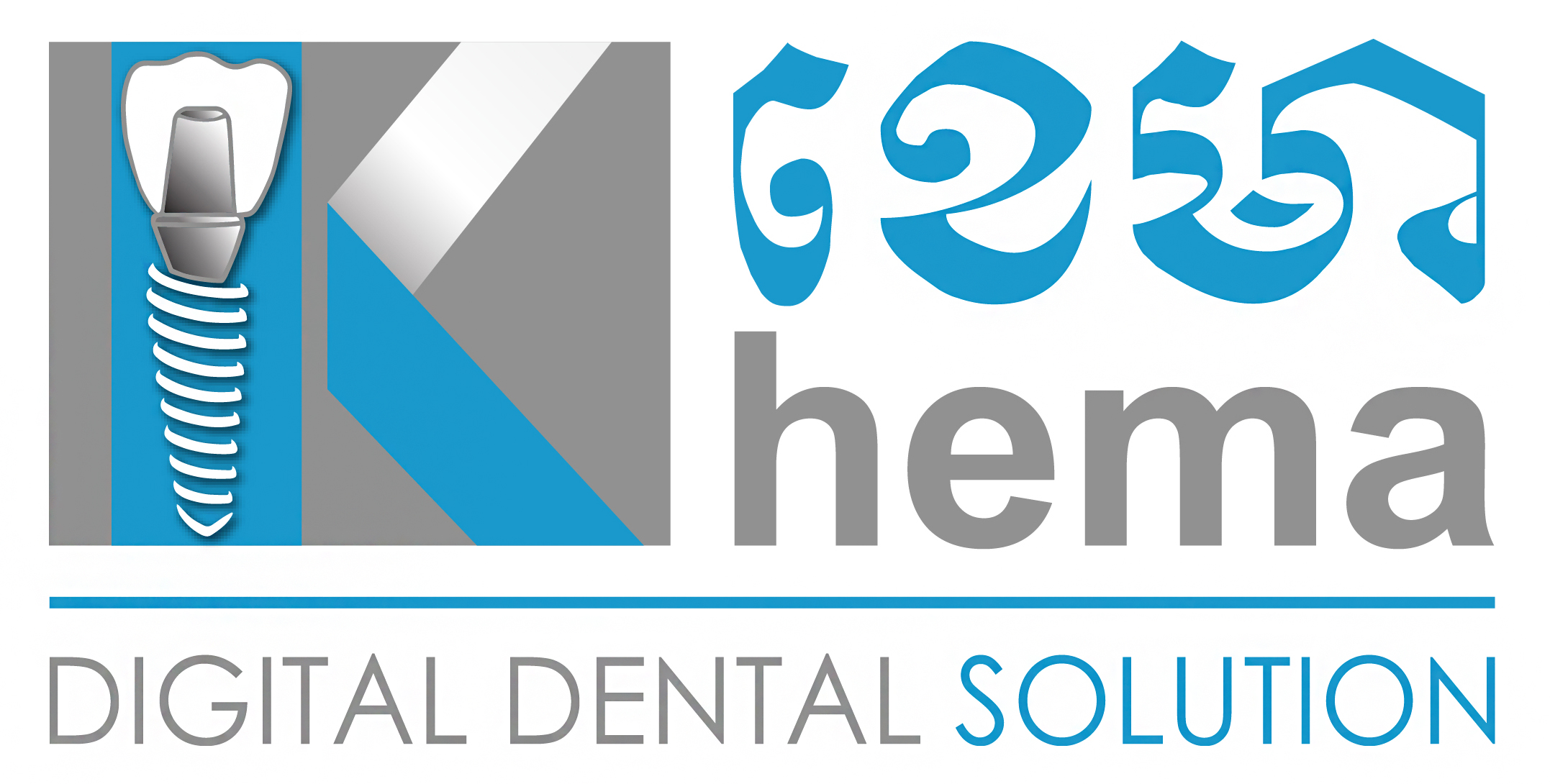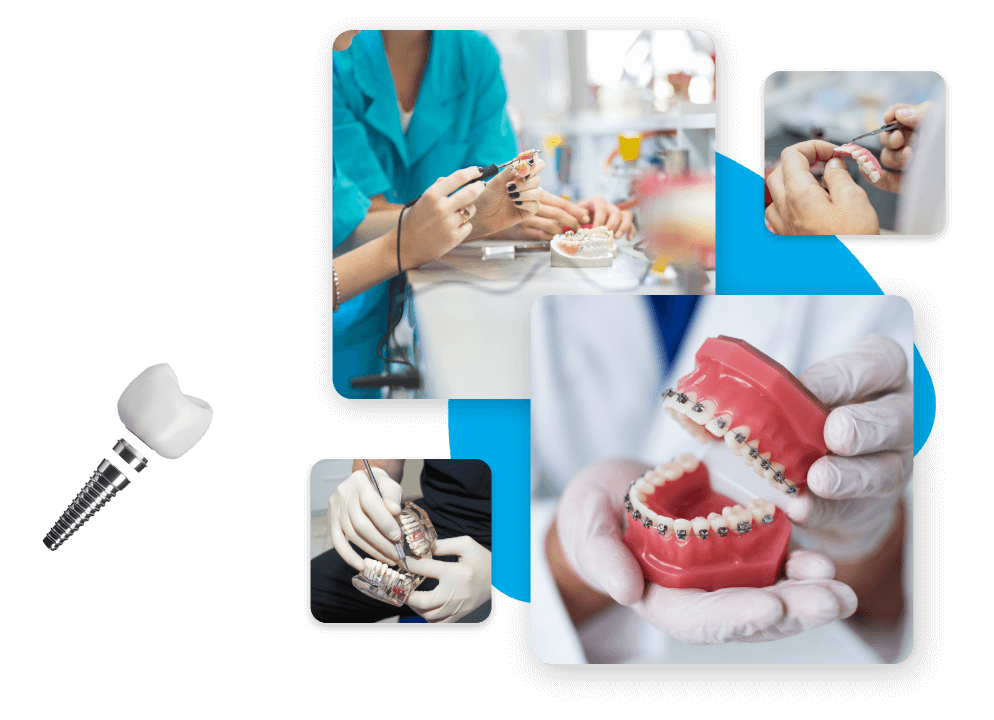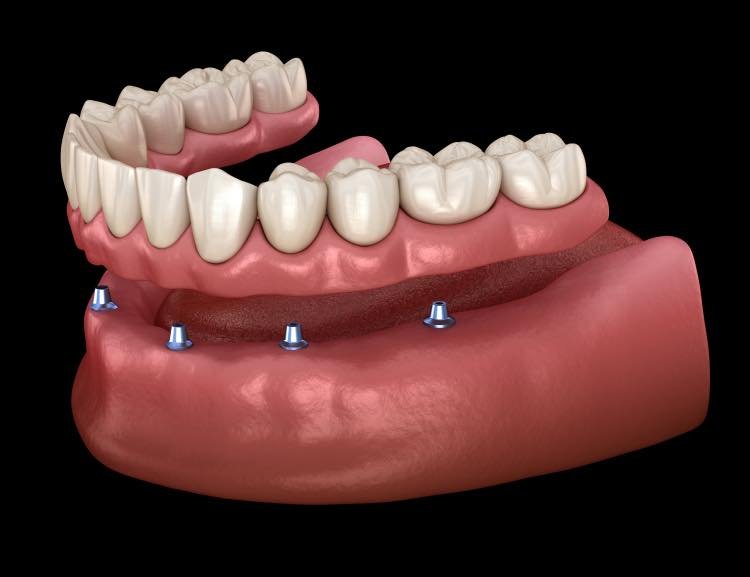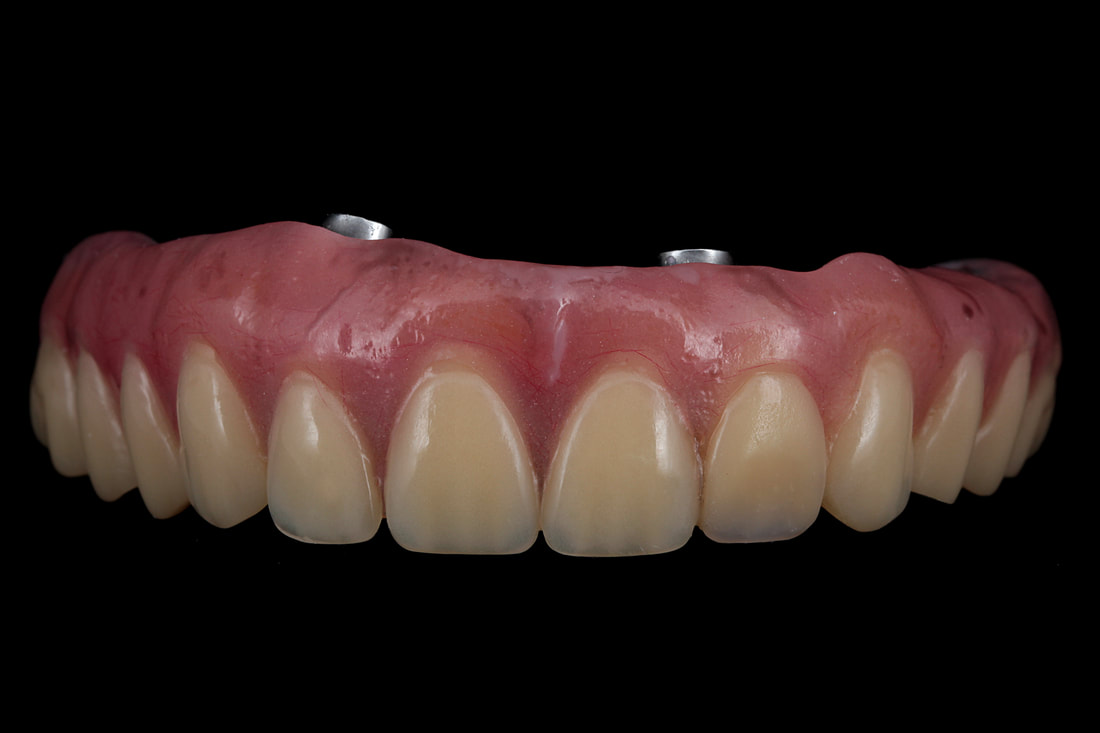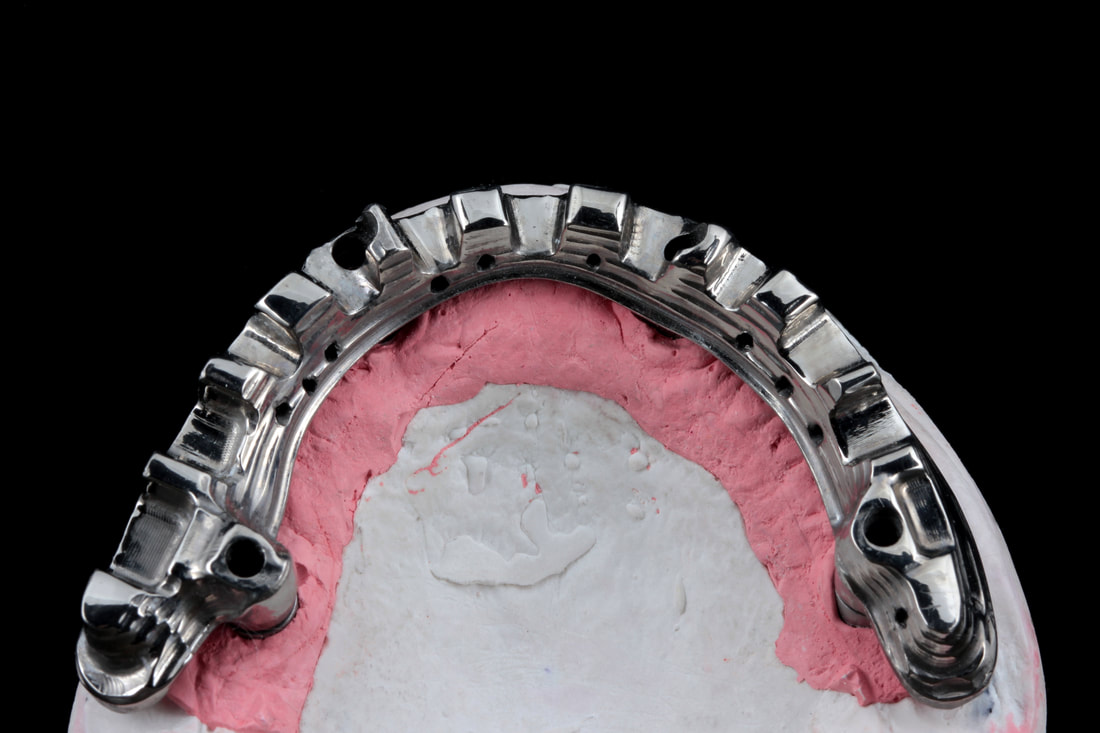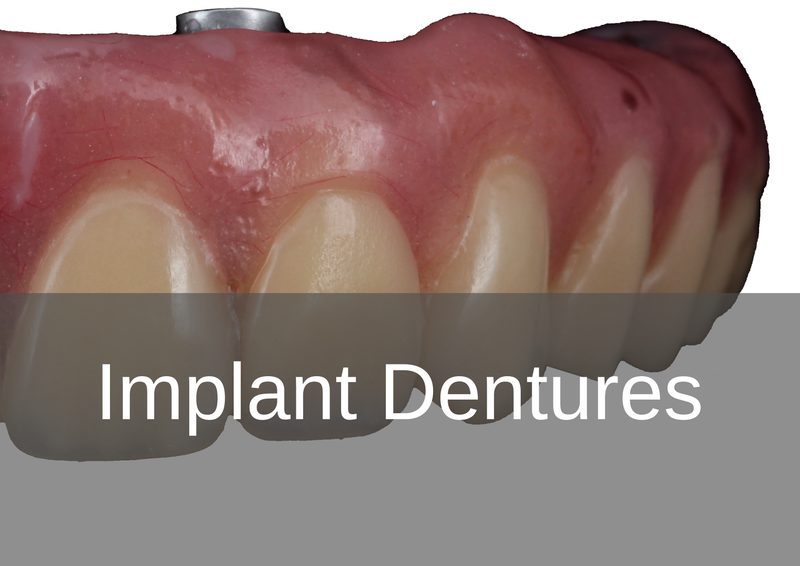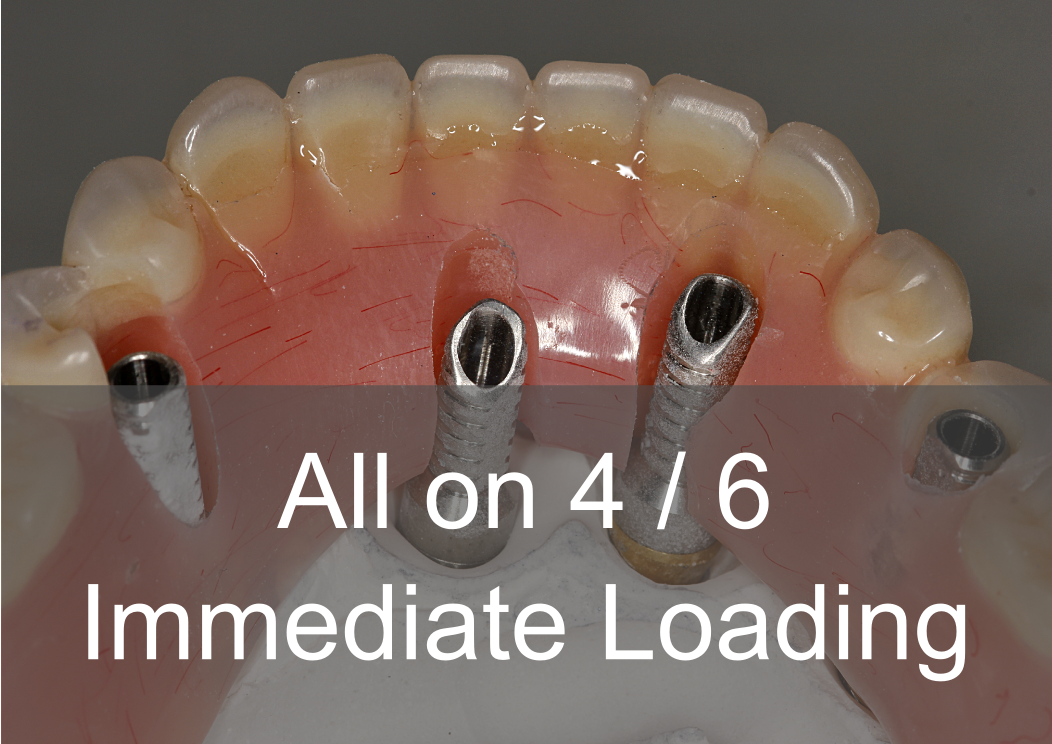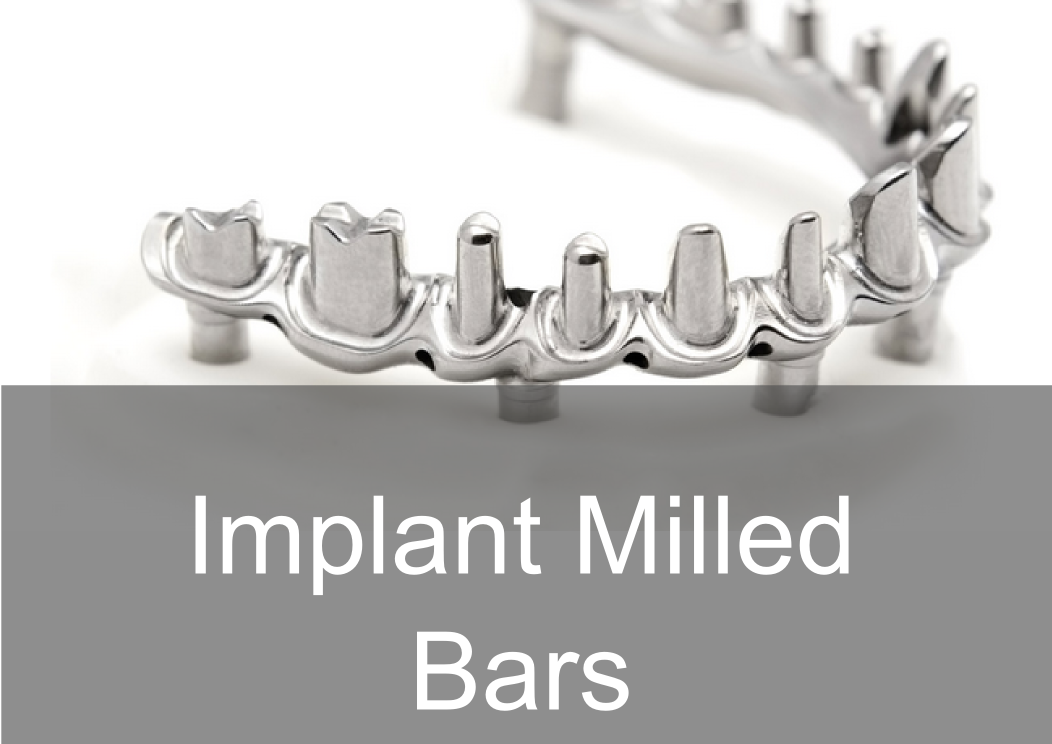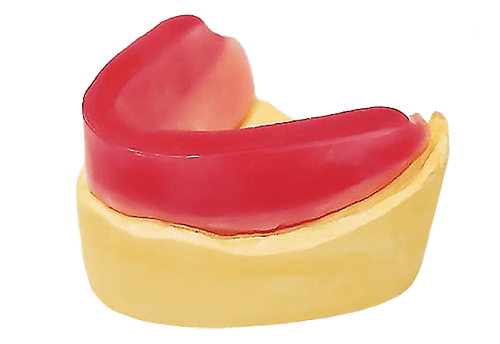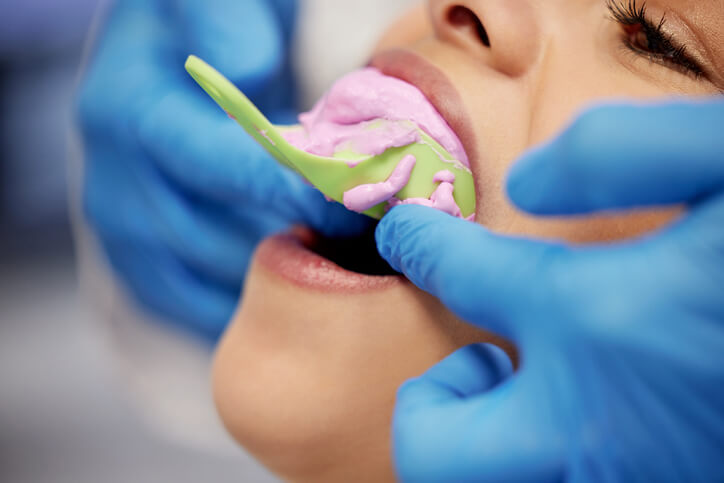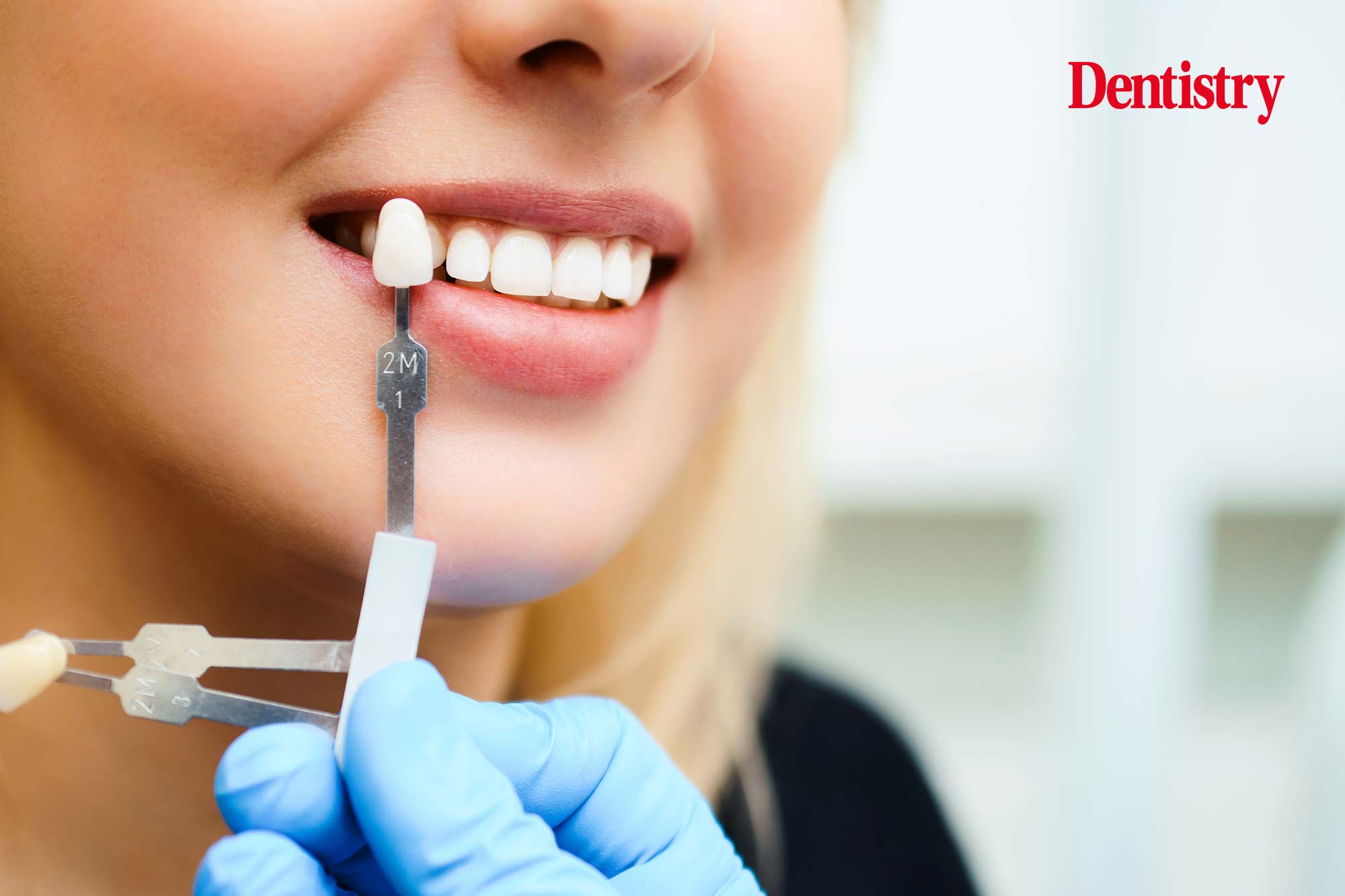- Impregum impression of implant pick up copings – (open tray or closed decision is yours, open tray will need the areas cut out of the impression tray)
Lab instructions: Separate bite reg and a verification jig of the implants ( Verification of the implants will make sure the pick-ups are correct and nothing has moved in the impression and casting stage, this will mean the master model is accurate). You can always ask for an implant special tray over the verification jig if you are concerned the implant pick-up is not correct.
https://www.perioimplantadvisory.com/restorative-dentistry/article/16412265/how-to-use-a-dental-implant-verification-jig-to-ensure-an-accurate-final-framework-every-time - Verification jig - Place jig onto the implants, make sure it seats passively on all implants, look for any signs of rocking, screw in the most distal screw, repeat this on the other side. Continue until every screw has been tried in and no lifts are seen. If there are rocks or lifts, this means that the impression pickup or master model is not accurate, section the jig and re-lute this section until its seat passively without any rocks. (This is the most important stage of bar work fabrication, DO NOT skip this, this step will guarantee a properly fitting final frame).
If you had to relute the jig:
Take a new impression (use stock tray again or special tray if you requested this) with the jig in-situ and ask the lab to re-cast for the try-in, make sure you do step 3 below. This will allow a more accurate and sturdy impression of the implant pickups as they are luted together by a solid verification jig. - Bite registration – Follow the denture protocols, orientation, facial features, OVD and RVD and register the bite relationship. Shade! (This is the second important stage of bar work fabrication, DO NOT skip this, this determines the wax try-in is within the patient parameters and verified implant pickups).
https://www.bremadent.co.uk/news/how-to-take-a-denture-bite-registration-clinical-guide
Lab instructions: Wax try in, using bite reg in shade ?? (request any special patient or clinical requests e.g the patients wants the anterior teeth the be positioned)
www.bremadent.co.uk/swissedent-cosmetic-dentures - Try in stage – Once the implant are verified and correct from mouth to master model and the try- in is accepted by the patient and dentist, this has now created accurate parameters, we can now move onto the milling the implant bar within both accurate parameters. (This is the third important stage, both the try-in and implants should be accurate and within the patients parameters as the bar is milled within the two parameters, if you change tooth positioning later you risk that tooth being unsupported by the bar).
- Final stage - You can then determine how you want the bar to be designed from the soft tissue profile and if you want an acrylic wrap around or a polished fit surface for functional patient hygiene and maintenance.
Reason for having the three stages above before an implant bar is milled:
- We need the implant pickups to be accurate on the master model. If this is not verified and pick-ups are not accurate the bar will be milled to this and will not fit, this will be an expensive remake to rectify.
- The bite reg transfers the patient information to us to conduct a accurate wax try in. The 'Dentogenic' concept to allow Dentist's to work in harmony with the patients objective personality, which implies anterior teeth are aesthetically positioned to compliment the patients facial characteristics, smile line, age and gender, by allowing natural light to brighten and darken certain anterior teeth, as with natural teeth. The 'Dentogenic' concept also generates the gingival components of the denture by determining the gingival line, contour, zenith, height and symmetry to create unique smile characteristics.
- The wax try-in makes sure the tooth position is within patients own parameters and jaw relationship and the aesthetics are accepted by the patient and dentist. Once confirmed with a verified implants on a master model, the bar is milled within the two parameters to make sure every tooth on the implant bar is accurately supported throughout the whole of arch, which is the key objective of full arch bar cases as the patients are relying on masticatory forces determined by the prothesis.
- The next stage would be the milled bar with the wax try-in transferred onto the bar for a final try-in before finishing the case in acrylic.

 English
English ភាសាខ្មែរ
ភាសាខ្មែរ
